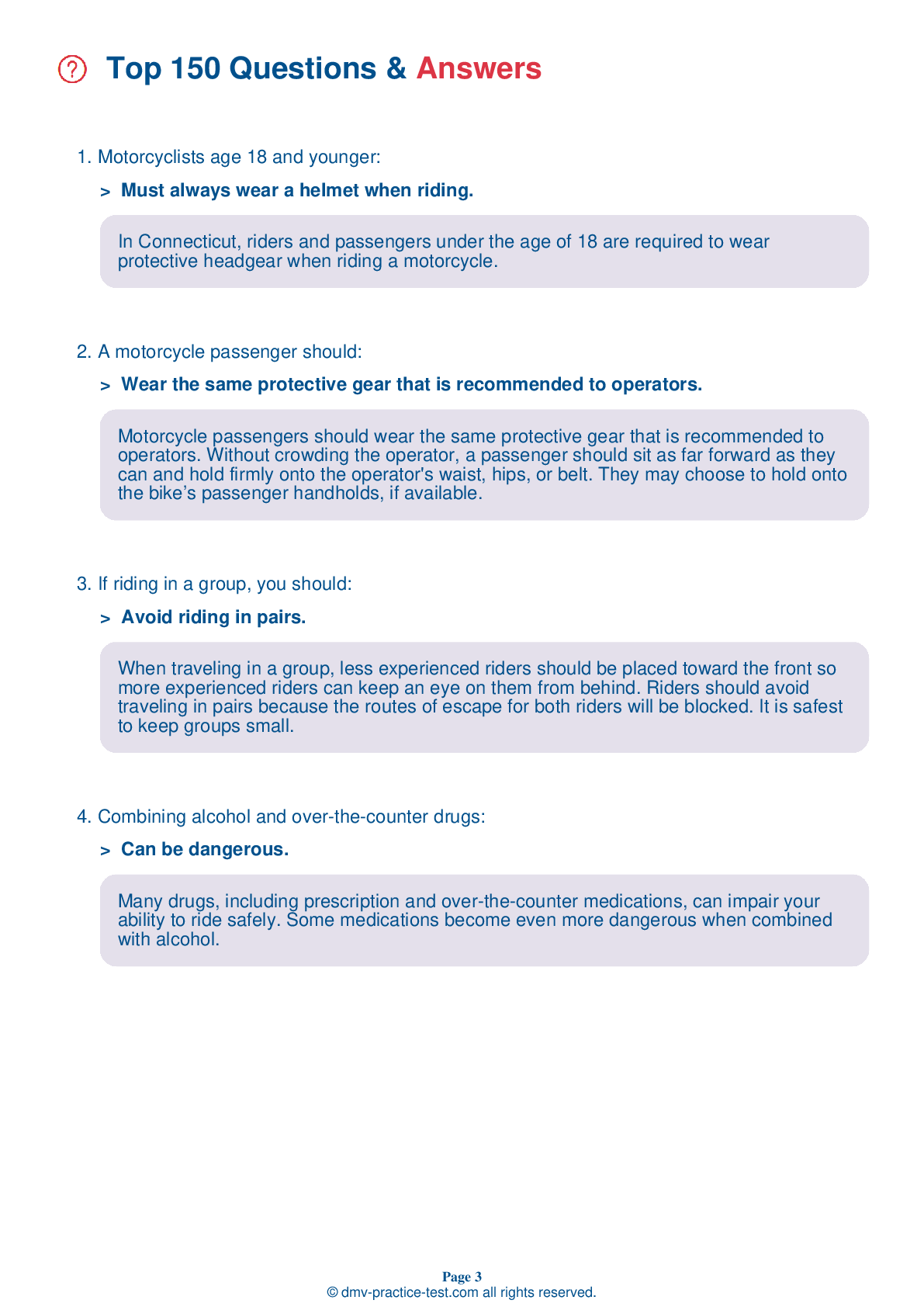Motorcycle Test | License CT 2025 | FREE Online Practice! #11 Page 2 of 3
Take this FREE motorcycle test (license in CT 2025) to check your knowledge of the road rules. To improve your results, download a motorcycle handbook online, study theory, and practice for free on our website. Still worried about how to get a motorcycle license in Connecticut in 2025? Check our website for more sample tests, train as much as possible, and boost your grades!
6 . When riding, the best sitting position:
When riding, you should be seated in a posture that allows you to use your arms to steer rather than to hold yourself up. You should not have to stretch to reach the handgrips and your arms should be slightly bent when holding them. You should keep your knees against the gas tank to maintain your balance.
7 . Mirror checks should be done:
Frequent mirror checks should be part of your normal scanning routine. Additionally, make a special point of using your mirrors before changing lanes, when stopping at an intersection, and before slowing down.
8 . Motorcycle riders should:
Road users should always signal their intentions before changing lanes, turning, or merging into traffic. Communicating with other drivers is an important part of preventing collisions.
9 . If your motorcycle begins to weave while you are riding over rain grooves or bridge gratings, you should:
The weaving motion that occurs when a motorcycle rides over rain grooves or bridge gratings is generally not dangerous. If you experience weaving when riding over one of these surfaces, simply relax and proceed straight across the grooves or gratings at a steady speed. Trying to compensate for the weaving motion by zigzagging is more dangerous than riding straight.
10 . When riding a three-wheeled motorcycle, a rider should:
When operating a three-wheeled motorcycle, it is possible to have only two wheels in contact with the ground. This condition occurs whenever enough weight is transferred outside of what are known as “tip-over lines.”
See the exact questions that will be on the 2025 Connecticut DMV exam.
99.2% of people who use the cheat sheet pass the FIRST TIME
Jeneen was tired of paying $5/gallon. She got herself a scooter that required the motorcycle license. She studyed the motorcycle test cheat sheet and passed her test the next day!
Christopher tells us how he knew nothing prior to obtaining the motorcycle study guide, and he only got one question wrong because he clicked on the wrong answer by mistake.



